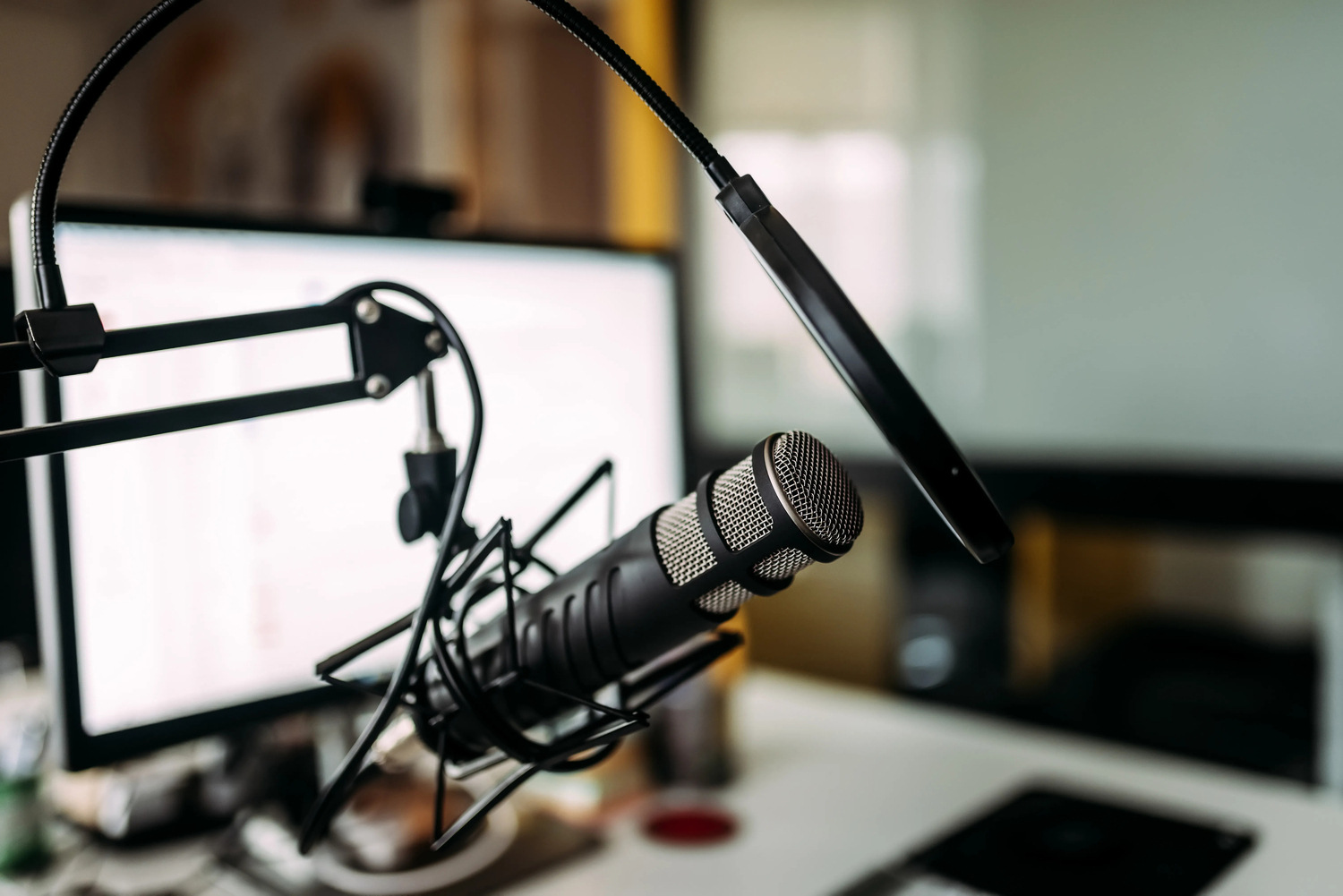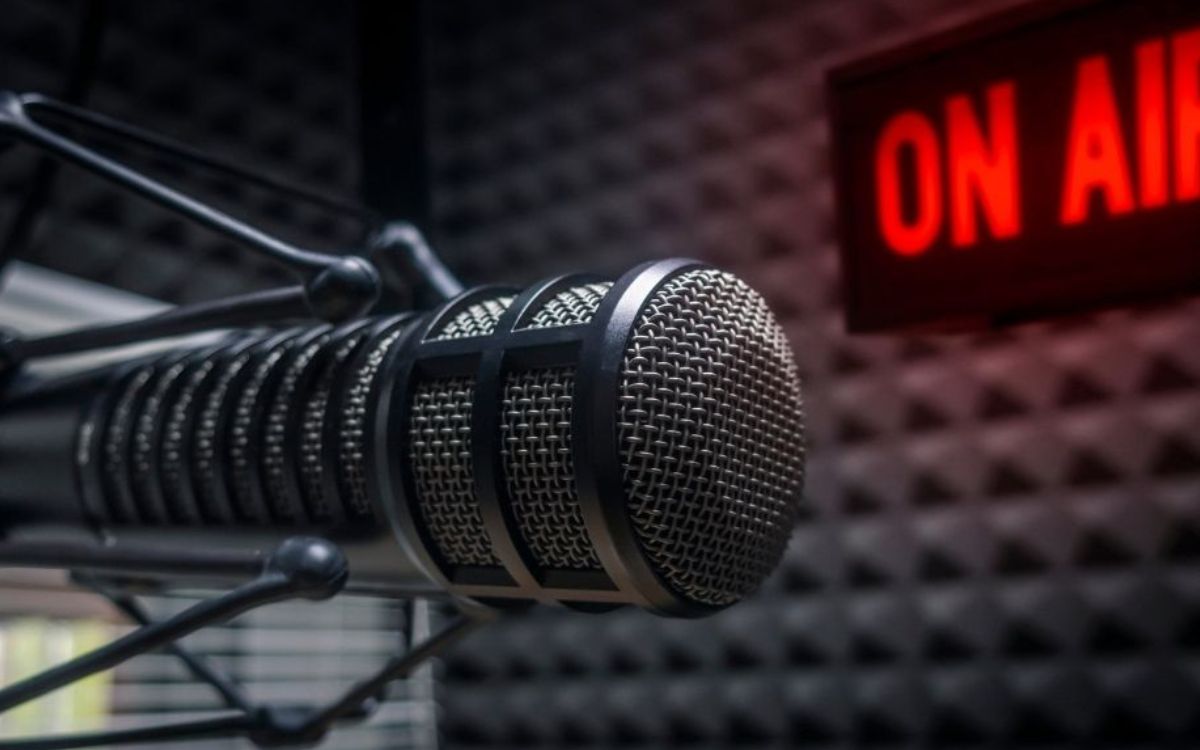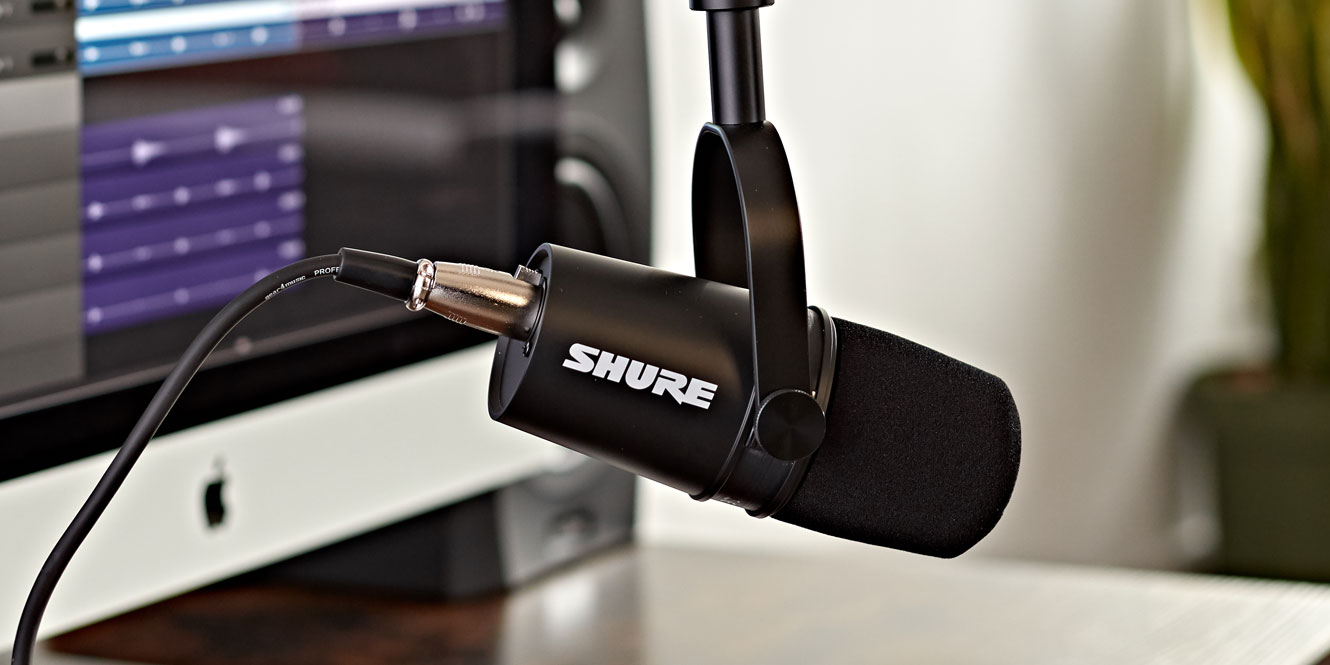Home>Devices & Equipment>Microphone>What Is A Dynamic Microphone


Microphone
What Is A Dynamic Microphone
Modified: March 12, 2024
Discover the benefits of dynamic microphones and how they compare to other microphone types. Learn about their durability and versatility for various recording and live sound applications.
(Many of the links in this article redirect to a specific reviewed product. Your purchase of these products through affiliate links helps to generate commission for AudioLover.com, at no extra cost. Learn more)
Table of Contents
Introduction
Introduction
Dynamic microphones are a ubiquitous tool in the world of audio recording and live sound reinforcement. These devices are renowned for their durability, versatility, and ability to capture sound with exceptional clarity. Whether used by musicians on stage, broadcasters in the studio, or public speakers at events, dynamic microphones play a pivotal role in ensuring high-quality audio reproduction.
In this article, we will delve into the inner workings of dynamic microphones, exploring their unique characteristics, advantages, and common applications. By understanding the fundamentals of dynamic microphones, you will gain valuable insight into their role in the realm of audio technology. Whether you are a seasoned audio engineer or simply curious about the technology behind microphones, this exploration will provide a comprehensive overview of dynamic microphones and their significance in the world of sound.
Throughout this article, we will uncover the science behind dynamic microphones, unraveling the principles that govern their operation. Additionally, we will examine the distinctive features that set dynamic microphones apart from other types of microphones, shedding light on their strengths and limitations. By the end of this journey, you will have a deepened understanding of dynamic microphones, empowering you to make informed decisions when selecting the ideal microphone for your specific audio needs.
Join us as we embark on a captivating exploration of dynamic microphones, unraveling the mysteries behind these essential tools of the audio trade. Whether you are an audio enthusiast, a professional in the field, or simply someone intrigued by the technology that shapes our sonic experiences, this journey promises to be both enlightening and enriching. Let's dive into the fascinating world of dynamic microphones and discover the magic that resides within these unassuming yet powerful devices.
How Does a Dynamic Microphone Work?
Dynamic microphones operate on the principle of electromagnetic induction, a fundamental concept in physics that forms the basis of their functionality. At the heart of a dynamic microphone is a diaphragm, typically made of a thin, lightweight material such as mylar or metal. This diaphragm is attached to a coil of wire, known as the voice coil, which is suspended within the magnetic field of a permanent magnet.
When sound waves enter the microphone, they cause the diaphragm to vibrate in accordance with the variations in air pressure. As the diaphragm moves, it imparts these movements to the voice coil, inducing an electrical current within the coil through the process of electromagnetic induction. This current, which mirrors the fluctuations in the sound waves, is then carried through the microphone’s output to be further amplified and processed.
The interaction between the moving diaphragm, the voice coil, and the magnetic field generates an electrical signal that faithfully represents the incoming sound waves. This signal, once amplified, can be routed to recording equipment, sound reinforcement systems, or other audio devices, allowing the original sound to be faithfully reproduced.
One of the key advantages of dynamic microphones lies in their rugged construction and ability to handle high sound pressure levels. Unlike condenser microphones, dynamic microphones do not require external power sources, making them reliable and versatile in various environments. Additionally, their robust design makes them well-suited for stage performances, where they can withstand the rigors of live sound reinforcement.
Understanding the inner workings of dynamic microphones unveils the elegance of their design and the simplicity of their operation. By harnessing the principles of electromagnetic induction, these microphones transform acoustic energy into electrical signals with remarkable precision, capturing the nuances of sound with exceptional fidelity. As we continue our exploration, we will delve deeper into the unique characteristics and applications of dynamic microphones, unraveling the intricacies that make them indispensable tools in the world of audio technology.
Characteristics of Dynamic Microphones
Dynamic microphones exhibit a range of characteristics that distinguish them from other types of microphones. One of their defining features is their robust construction, making them well-suited for demanding environments such as live music venues and outdoor recording settings. The dynamic microphone’s ability to withstand high sound pressure levels without distortion makes it a popular choice for capturing loud sound sources, including amplified musical instruments and vocal performances.
Furthermore, dynamic microphones are known for their versatility across a wide frequency range. They are capable of faithfully reproducing both low and high-frequency sounds, ensuring that the entire spectrum of audio is captured with accuracy. This characteristic makes dynamic microphones suitable for a diverse array of recording and sound reinforcement applications, from capturing the deep resonance of a bass drum to capturing the shimmering frequencies of cymbals in a drum kit.
Another notable trait of dynamic microphones is their inherent ability to minimize background noise and feedback. Their design allows them to effectively reject unwanted sounds coming from off-axis directions, focusing on the intended sound source and reducing the risk of audio interference. This attribute is particularly advantageous in live sound settings, where minimizing ambient noise and feedback is crucial for delivering clear and intelligible audio.
Additionally, dynamic microphones are prized for their durability and longevity. With minimal moving parts and a sturdy build, they can endure the demands of touring, stage performances, and outdoor recording sessions, making them a reliable choice for professionals in the audio industry.
Moreover, dynamic microphones are often more cost-effective than their condenser counterparts, making them an attractive option for budget-conscious individuals and organizations. Their affordability, combined with their exceptional performance in various scenarios, positions dynamic microphones as indispensable tools for audio professionals, musicians, broadcasters, and content creators.
As we unravel the characteristics of dynamic microphones, it becomes evident that their resilience, versatility, and cost-effectiveness make them a cornerstone of the audio industry. In the subsequent sections, we will explore the advantages and disadvantages of dynamic microphones, shedding further light on their role in the realm of sound capture and reproduction.
Advantages and Disadvantages of Dynamic Microphones
Dynamic microphones offer a host of advantages that contribute to their widespread use in various audio applications. Their robust construction and ability to handle high sound pressure levels make them well-suited for capturing powerful sound sources, such as amplified musical instruments and vocal performances in live settings. This durability ensures that dynamic microphones can withstand the rigors of touring, stage performances, and outdoor recording sessions, making them a reliable choice for professionals in the music and entertainment industry.
Moreover, dynamic microphones do not require external power sources, as they utilize electromagnetic induction to generate electrical signals. This self-contained design eliminates the need for batteries or phantom power, adding to their convenience and versatility in diverse recording and performance environments.
Another advantage of dynamic microphones is their ability to effectively minimize background noise and feedback. Their directional characteristics enable them to focus on the intended sound source while rejecting off-axis sounds, contributing to clear and intelligible audio reproduction. This attribute is particularly valuable in live sound reinforcement, where ambient noise and feedback can pose significant challenges.
Furthermore, dynamic microphones are often more cost-effective than condenser microphones, making them an attractive option for individuals and organizations with budget constraints. This affordability, coupled with their exceptional performance across a wide frequency range, positions dynamic microphones as essential tools for musicians, broadcasters, podcasters, and content creators seeking reliable and versatile audio capture solutions.
Despite their numerous advantages, dynamic microphones have certain limitations that warrant consideration. One notable drawback is their relatively lower sensitivity compared to condenser microphones. This lower sensitivity can result in a reduced ability to capture subtle nuances and low-level sounds, making dynamic microphones less suitable for certain studio recording applications that require utmost sensitivity and precision.
Additionally, dynamic microphones tend to have a narrower frequency response compared to condenser microphones, which may impact their suitability for capturing detailed sonic characteristics across the entire frequency spectrum. While dynamic microphones excel in capturing powerful and mid-range frequencies, they may exhibit limitations in reproducing the extreme highs and lows found in certain audio sources.
By weighing the advantages and disadvantages of dynamic microphones, audio professionals and enthusiasts can make informed decisions regarding the selection of microphones that best align with their specific recording and performance requirements. In the subsequent section, we will explore the common uses of dynamic microphones, shedding light on the diverse applications where these versatile devices shine.
Common Uses of Dynamic Microphones
Dynamic microphones find extensive application across a spectrum of audio recording and live sound reinforcement scenarios, owing to their durability, versatility, and ability to capture sound with clarity and precision. One of the most prevalent uses of dynamic microphones is in live music performances, where they are employed to capture vocals, amplified instruments, and percussion with exceptional fidelity and resistance to feedback.
On stage, dynamic microphones are the go-to choice for vocalists, as they excel in capturing the nuances and power of live vocals while effectively rejecting ambient noise and stage monitor feedback. Additionally, dynamic microphones are commonly utilized to mic guitar amplifiers, bass cabinets, snare drums, and toms, delivering punchy and articulate sound reproduction in high-energy musical performances.
Beyond live music settings, dynamic microphones are indispensable tools in broadcast and podcast production. Their ability to deliver clear and intelligible speech reproduction makes them ideal for radio broadcasting, podcast recording, and voice-over work. The durability of dynamic microphones also makes them well-suited for field recording and on-location interviews, where reliability and resilience are paramount.
Furthermore, dynamic microphones are frequently utilized in public address systems, conference settings, and educational environments for speech amplification and vocal reinforcement. Their ability to minimize background noise and focus on the primary sound source makes them valuable in ensuring clear and effective communication in various public and professional settings.
In the realm of studio recording, dynamic microphones are favored for capturing the powerful sound of drums, including the snare, toms, and kick drum. Their ability to handle high sound pressure levels and deliver robust, impactful sound reproduction makes them essential components of drum mic setups in recording studios of diverse genres.
Moreover, dynamic microphones are commonly employed in sound reinforcement for sporting events, outdoor concerts, and large-scale public gatherings, where their rugged construction and resistance to environmental factors make them reliable choices for delivering impactful audio to vast audiences.
As we explore the common uses of dynamic microphones, it becomes evident that their adaptability and reliability position them as essential tools in the realms of music, broadcasting, public address, and studio recording. Their ability to capture sound with clarity and resilience in diverse environments underscores their enduring relevance in the dynamic landscape of audio technology.
Conclusion
Dynamic microphones stand as stalwart pillars in the realm of audio technology, offering a blend of resilience, versatility, and sonic fidelity that makes them indispensable in a myriad of applications. From live music performances to broadcast studios, from public address systems to recording studios, dynamic microphones continue to play a pivotal role in capturing and reproducing sound with clarity and precision.
As we have journeyed through the inner workings, characteristics, advantages, and common uses of dynamic microphones, a profound understanding of their significance has emerged. Their ability to withstand high sound pressure levels, reject ambient noise, and deliver reliable performance in diverse environments underscores their enduring appeal to audio professionals, musicians, broadcasters, and content creators.
While dynamic microphones exhibit certain limitations in sensitivity and frequency response when compared to condenser microphones, their affordability, durability, and ability to capture powerful sound sources with exceptional fidelity position them as indispensable tools in the audio industry. Their impact spans from the electrifying energy of live music stages to the nuanced clarity of broadcast studios, leaving an indelible mark on the sonic landscape.
As technology continues to evolve, dynamic microphones remain steadfast, adapting to new challenges and opportunities while retaining their core strengths. Their timeless presence in the audio industry serves as a testament to their enduring value and irreplaceable role in shaping the way we capture, amplify, and experience sound.
In conclusion, dynamic microphones embody the marriage of rugged reliability and sonic excellence, standing as enduring symbols of innovation and resilience in the ever-evolving world of audio technology. Their legacy continues to resonate through the annals of sound, ensuring that the power of their clarity and the strength of their presence endure for generations to come.











